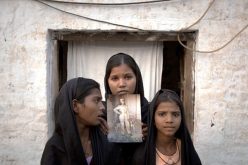Lisa Schlein, Geneva — A new report finds traffickers, employers and organized crime rake in $150 billion a year from commercial sexual exploitation and forced economic exploitation.
State-sanctioned forced labor still occurs, but the International Labor Organization said its report focuses on the private sector.
The data for the first report on the economics of forced labor has been collected during a 10-year period. It includes more than 7,000 cases of forced labor and testimony from victims.
The report said commercial sexual exploitation accounts for two-thirds of the estimated $150 billion in illegal profits. It said the other one-third results from forced economic exploitation, including domestic work, agriculture, manufacturing, construction, mining and utilities.
Annual profits from this illegal trade are highest in the Asian-Pacific region, because of the high number of victims from there, according to Beate Andrees, who heads the ILO Special Action Program to Combat Forced Labor.
“The second highest estimates are in the developed economies. This includes EU member states and this can be explained by the value-added per labor in those countries. The annual profits per victim…are highest in the developed economies, followed by the Middle East and lowest in the Asia-Pacific region and in Africa,” Andrees said.
The report estimated that 21 million men, women and children are involved in forced labor – most in the private sector. It said 5.5 million are children and 2.2 million are victims of state-authorized forced labor.
The study found more than half the people in forced labor are women and girls, primarily in commercial sexual exploitation and domestic work, while men and boys are mainly forced to work in agriculture, construction, and mining.
“The findings are that households that are extremely poor and that find it very difficult to deal with sudden income shocks and therefore need to borrow money to smooth consumption, are at a higher risk of forced labor than others. And, it is very often the case that then the entire family is bonded,” Andrees said.
The report said other factors pushing individuals into forced labor include lack of education, illiteracy, gender, and migration.
The ILO, which carried out pilot surveys in eight countries, found traditional forms of forced labor, including bonded labor, slavery-like practices and debt bondage are common in Nepal, Niger, and Guatemala. The group also surveyed Bolivia, Ivory Coast, Armenia, Moldova and Georgia, where the more modern forms of slavery prevail.
The ILO annual conference later this month is to begin drawing up new standards to tackle forced labor.
The organization is calling for the extension of social protection measures to poor people, investing in education and skills training, and promoting the rights of migrant workers.










